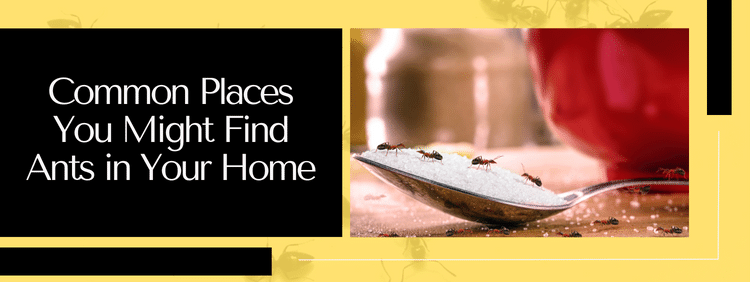Toronto Pest Removal: Common Places You Might Find Ants in Your Home

Ants, those industrious explorers, have a knack for sneaking into our homes, often undetected until they’ve set up camp. If you’re reading this, chances are you’ve encountered these persistent pests and are seeking solutions.
In Toronto, carpenter ant extermination is a common concern, and understanding where these ants hide is the first step toward effective elimination. Below, we’ll explore the usual suspects – the kitchen, washrooms, basements, and even inside walls – where these tiny troublemakers often seek refuge.
With help from Truly Nolen Canada, experts in carpenter ant extermination in Toronto, you can learn how to get rid of carpenter ants naturally and efficiently while keeping your home ant-free.
Spaces in Your Home That May Require Professional Carpenter Ant Extermination in Toronto
1. The Kitchen: The Food Source Haven
Ah, the kitchen – the heart of every home, and also a paradise for ants. Crumbs, spills, and forgotten scraps become gourmet feasts for these pests. Their quest for food is relentless, and they can quickly find their way into your pantry, cabinets, and even the tiniest cracks in your countertops.
Carpenter ants are resourceful and skilled at finding food sources, so keeping your kitchen clean and free of accessible edibles is crucial to avoid infestations.
But it’s not just the visible mess that attracts them. Even a seemingly spotless kitchen can harbour traces of sweetness or oil that ants can detect from afar. To deter these unwelcome visitors, store food in airtight containers and wipe surfaces regularly with a mixture of vinegar and water.
2. Washrooms: A Damp Hideout
Washrooms may seem like an unlikely place to need carpenter ant extermination in Toronto, but the pests’ affinity for moisture can lead them to your bathroom.
Leaky faucets, damp towels, and even condensation on the bathroom walls provide an inviting environment for carpenter ants. These pests are drawn to the dampness as it suits their need for hydration. Regularly inspecting and fixing leaks can go a long way in preventing ant invasions in this unexpected part of your home.
3. Basements: Dark and Humid Retreats
Basements, often dark and humid, are another hotspot for carpenter ants. Cracks in the foundation, gaps around pipes, and other entry points make it easy for ants to infiltrate your basement. They thrive in such environments, creating nests in hidden corners, behind storage boxes, or beneath floorboards.
Regularly cleaning and sealing potential entry points can help deter these pests from making themselves at home in your basement.
Lastly, regular inspections are key to staying ahead of potential issues. Make it a habit to check for any signs of ant activity or new entry points. If you notice even minor cracks in the walls or foundation, address them promptly.
4. Inside Walls: Unseen Intruders
Perhaps the most elusive carpenter ant hideout of all is inside your walls. Carpenter ants are skilled at navigating tight spaces, and the voids within your walls provide them shelter and protection. They can establish colonies there, wreaking havoc on your home’s structural integrity without you even realizing it.
If you suspect ants inside your walls, you may wonder, “Where’s the best carpenter ant extermination near me?” Experts can locate and eliminate the nests, ensuring your home remains free of these hidden intruders.
Trust Truly Nolen Canada for Effective Carpenter Ant Extermination in Toronto
When facing a carpenter ant infestation, DIY methods might provide temporary relief, but for a lasting solution, seeking professional help is paramount. That’s where the team at Truly Nolen Canada comes in.
With our expertise in carpenter ant extermination in Toronto, we can effectively identify the source of the infestation and implement a comprehensive removal strategy. Don’t let these resilient pests compromise the comfort and safety of your home. By addressing the common hiding spots – the kitchen, washrooms, basements, and inside walls – you can take the first steps toward an ant-free environment.